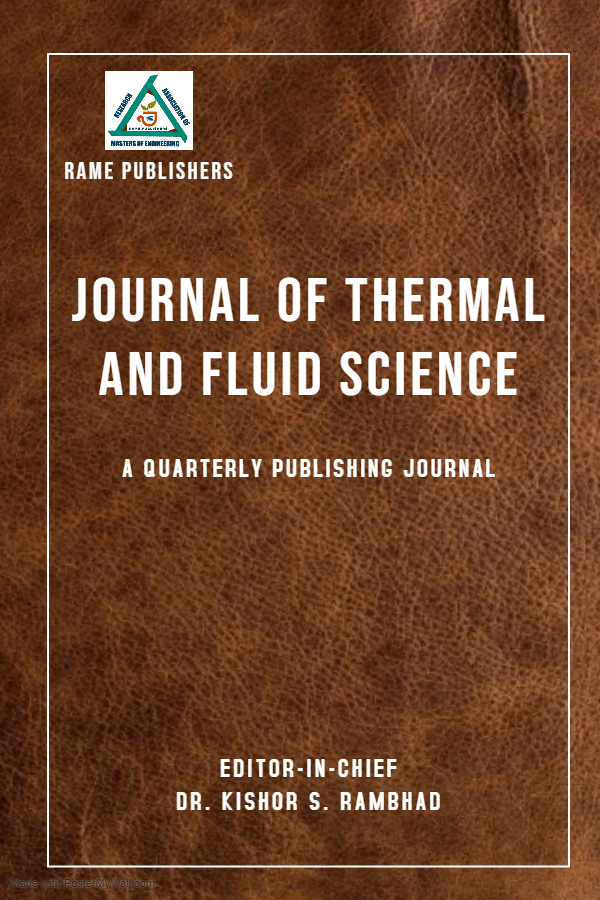Curbing Energy Deficiency Social Policies among Vulnerable Internally Displaced Persons in Northeastern Nigeria - A case study of Borno, Yobe and Adamawa State
Obed John Dagwa
Volume 1: Issue 1, August 2020, pp 25-31
Author's Information
Obed John Dagwa1
Corresponding Author
1Department of Research and Communication, Northeast Development Commission, Nigeria
johnobed74@gmail.com
Abstract:-
In this research paper, it draws attention to the discussion on social policies for mitigating energy poverty in Vulnerable and Internally Displaced Persons. This urgently needs a policy approach that would mitigate the current rising levels of energy deficiency to a sustainable Internally Displaced Community with a healthier future. While conducting an energy prices, the policy framework and household income, we conduct a preliminary investigation of energy deficiency from a macro-level perspective and associated policy interventions in the United Nations. Obtained from a non-classical qualitative comparative analysis, the results clearly show that the deficiency in energy can be deduced from highly substantial interdependence that may be summarized in two paths; that is, low household income and focus on energy policy, and high rate of energy prices and energy-policy focus. Surprisingly, myfindings indicate that an energy policy focus is found in Internally Displaced Persons Camp with the highest levels of deficiency in energy. Furthermore, it also offers deep analysis into the absence of energy, where social policy seems to play the key role. Taken together, this argue that the IDPs facing above-average energy deficiency are captured in an energy-deficiency trap, whereby the existing energy-policy focus does not yield the desired results and the social policy is often too costly to implement due to the problem's magnitude. The main concern is that prioritizing any of the policies may slow down the transition to a sustainable energy community if the Internally Displaced Persons. Therefore, there should be a call on the Government and the International to further examine the energy deficiency phenomenon and to also participate in creating effective policies.Index Terms:-
Curbing, Energy Deficiency, Social Policies, Vulnerable, Internally Displaced Persons, Northeast Nigeria.REFERENCES
[1] Boardman, B, “Fuel poverty from cold homes to affordable warmth,” London, Belhaven Press, 1991.[2] Bollino, C. A., & Botti, F. “Energy poverty in Europe: A multidimensional approach.” PSL Quarterly Review, 70 (283), 473–507, 2017.
[3] Chen, T. H., Chen, C. Y., Yang, H. C. P., & Chen, C. W., “A mathematical tool for inference in logistic regression with small-sized data sets, a practical application on ISW-ridge relationships”, Mathematical Problems in Engineering, 2008.
[4] Dubois, U., & Meier, H., “Energy affordability and energy inequality in Europe: Implications for policymaking”, Energy Research & Social Science, 18, 21–35, 2016.
[5] EPOV, What is energy poverty? (Online).
https://www.energypoverty.eu/about/what energy poverty (Accessed September 1 2019).
[6] EU SILC – “European Union statistics on income and living conditions (online). http://ec.europa.eu/eurostat/web/income-and-living-conditions/data/database (Accessed May 5 2019).
[7] Pye, S., Dobbins, A., Baffert, C., Brajkovič, J., Grgurev, I., De Miglio, R., & Deane, P., “Energy poverty and vulnerable consumers in the energy sector across the EU: Analysis of policies and measures”, Energy, European Commission, 2015.
[8] Ragin, C. C., & Davey, S. “fs/QCA (computer program), version 2.5. Tucson”: University of Arizona, 2009.
[9] Robinson, C., Bouzarovski, S., & Lindley, S., “Under representing neighborhood vulnerabilities, the measurement of fuel poverty in England”, Environment and Planning A: Economy and Space, 50(5), 1109–1127, 2018.
[10] Scarpellini, S., Hernández, M. A. S., Moneva, J. M., Portillo-Tarragona, P., & Rodríguez, M. E. L., “Measurement of spatial socioeconomic impact of energy poverty.” Energy Policy, 124, 320–331, 2019.
[11] Schneider, C. Q., & Wagemann, C. “Set theoretic methods, a user’s guide for qualitative comparative analysis and fuzzy sets in social science.” Cambridge: Cambridge University, 2012.
[12] Thomson, H., & Snell, C. “Quantifying the prevalence of fuel poverty across the European Union.” Energy Policy, 52, 563–572, 2013.
[13] Weekly oil bulletin [online].
https://ec.europa.eu/energy/en/data-analysis/weekly-oil-bulletin (Accessed May 10 2019).
[14] Maxim, A., Mihai, C., Apostoaie, C. M., Popescu, C., Istrate, C., & Bostan, I. “Implications and measurement of energy poverty across the European Union.” Sustainability, 8(5), 483, 2016.
[15] Bouzarovski, S., & Tirado Herrero, S. “The energy divide: integrating energy transitions, regional inequalities and poverty trends in the European Union”. European Urban and Regional Studies, 24(1), 69–86, 2017.
[16] Vanguard Newspaper. “Energy crisis in Nigeria” News report, December 2019.
To view full paper, Download here
To View Full Paper
For authors
Author's guidelines Publication Ethics Publication Policies Artical Processing Charges Call for paper Frequently Asked Questions(FAQS) View All Volumes and IssuesPublishing with




